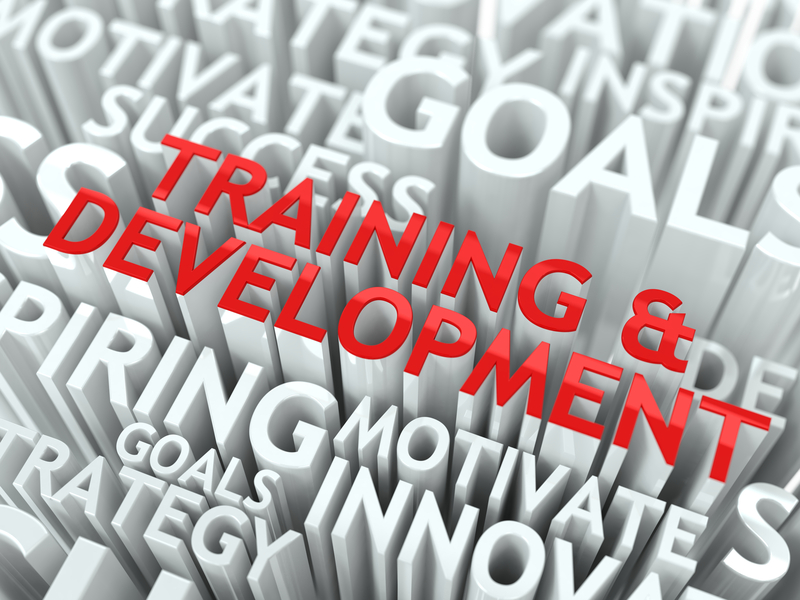It might seem counterintuitive to write about job sustainability at a time when millions of job openings are going unfilled. Although a number of theories have been suggested for why people aren’t filling available jobs, one of the oft-cited reasons is lack of skills. McKinsey & Company analysts note, “In the past year, the COVID-19 pandemic has quickly and dramatically accelerated the need for new workforce skills. The rapid rise of digitization and remote work has placed new demands on employees who, in many instances, now require different skills to support significant changes to how work gets done and to the business priorities their companies are setting.”[1] Vala Afshar (@ValaAfshar), Chief Digital Evangelist for Salesforce, writes, “The digital skills gap is becoming a digital skills crisis. A global survey shows that nearly 90 percent of executives are experiencing skills gaps in their workforce, or expect to within a few years.”[2]
The Skills Training Imperative
Liz Hilton Segel, a McKinsey senior partner, believes “capability-building” is an imperative in today’s business environment. She explains, “One of the lessons that companies have learned during this pandemic is how much change is possible so quickly. That lesson has amplified the mindset within organizations that capability building is important — and that it’s critical for all employees to have a personalized learning journey. Every employee’s approach to their career should be one of excitement about being able to develop new skills and new knowledge that helps enhance their productivity all along their career path.”[3] While some employees realize they must shoulder responsibility for their own development, more and more companies are also beginning to understand they have an important role to play in employee capability-building.
Segel explains, “What we’re all realizing today is that for everyone, no matter how long they’ve been at a company or at what level, there’s always a next horizon of learning that’s important for them to stay current, given the speed at which business is changing. The more employers and employees embrace the idea that each person has a personalized learning journey ahead, the more successful the company will be.” I’m a huge believer in life-long learning. If companies can instill that spirit in their employees, and support them in their efforts, they can create a win-win scenario.
Few workers have identical skillsets or require the same training curriculum. As Segel notes, personalized learning is likely to be emphasized in any future training scenario. Allan Pettman, CEO at Cognito Learning, suggests machine learning can be gainfully employed to help teach workers new skills. He explains, “Machine learning is one of the most exciting parts of the wider field of artificial intelligence and offers huge opportunities to improve the learning experience for employees. Crucially, it can also help businesses to make sure that the training they deliver is highly personalized and completely relevant to their employees’ roles. … AI and machine learning are already proving invaluable in many different fields, from helping in medical diagnosis to freeing up human workforces to focus on the things that machines struggle with — like being creative or offering personal care. “[4]
Skills + Support = Success
Skills training is essential to upgrade and future-proof the workforce. It’s becoming clear, however, that skills training alone is not enough. The McKinsey analysts note, “Also required: help from their employers to develop the skills that will make the overall business, and its individual employees, future-ready.” They add, “Regardless of the skills involved, we also found that there is a clear recipe for success with skill transformations, which are large-scale, programmatic efforts to support skill building so that employees can adapt to fundamentally changing requirements of their current role or move into a new one. When companies follow all nine practices that support a skill transformation — for example, assessing the demand and need for specific skills in the future, designing a portfolio of initiatives to close skill gaps, and launching an organizational structure that is dedicated to learning — the odds for success are nearly guaranteed.”
The “nine practices that support a skill transformation” to which the McKinsey analysts refer involve three phases of transformation. The first phase is the Scout phase. During this phase, companies conduct “workforce planning to assess potential skills gaps.” The three “practices” involved in this phase are:
- Assessing demand and/or need for specific skills in the future
- Determining the current supply of specific skills
- Analyzing skill gaps (including development of the business case to close them)
The second skill transformation phase is the Shape phase. During this phase, companies develop “a skill strategy to ensure that the workforce is future-ready.” The three supporting practices during this phase are:
- Designing a portfolio of initiatives to close skill gaps
- Designing tailored learning journeys and delivery plans for specific roles and/or groups of employees
- Deciding on learning infrastructure and enablers
The final skill transformation phase is called the Shift phase. During this phase, companies “reimagine infrastructure for skilling at scale.” The three supporting practices during this phase are:
- Launching a ‘skilling hub’ or other organizational structure dedicated to learning
- Delivering a skill transformation at scale across the organization via comprehensive capability-building programs that address the most critical skill needs.
- Implementing dynamic tracking of workforce and impact
Although the McKinsey skill transformation framework is focused on corporate programs, journalist Steve Lohr (@SteveLohr) reports that a similar approach in Wisconsin, which included free classes paid for by Microsoft, and follow-on support showed impressive results. He elaborates, “The technical skills, in the free classes from Microsoft’s LinkedIn job listing and training service, were [complemented by a] Wisconsin group [that] provided career guidance, moral support, tips on résumé writing and interviews, and job contacts.”[5]
Concluding Thoughts
Lohr observes, “The nation’s jobs market stands at a somewhat puzzling juncture. There are still 7.6 million fewer people working than before the pandemic. But job openings are at record high levels, too. Some employers are even turning to incentives beyond money, like food and tuition for family members, to lure workers. The reasons so many jobs remain unfilled are matters of vigorous and often partisan debate.” As Lohr explains, answers are not simple and getting people over the line into a job — what some labor experts call the “last-mile problem” — requires the input of many stakeholders. He writes, “It is one thing to have in-demand skills, they say. But good jobs also require ‘soft skills’ like teamwork, communication and the willingness to learn new things. And then, those freshly skilled people need to be matched to local job opportunities. Research has shown the effectiveness of programs that are local, personal and focused on addressing the last mile of the labor market.” Segel insists companies should invest in their employees for lots of reasons, not the least of which is self-interest. She concludes, “Capability building will have a direct result on your financial performance, on your ability to compete more effectively for customers, and on employee satisfaction — so treat capability building as one of the most important strategic weapons you have. Make purposeful investment in it.”
Footnotes
[1] Fabian Billing, Aaron De Smet, Angelika Reich, and Bill Schaninger, “Building workforce skills at scale to thrive during—and after—the COVID-19 crisis,” McKinsey & Company, 30 April 2021.
[2] Vala Afshar, “Companies are key to solving the digital skills gap,” ZDnet, 21 June 2021.
[3] Kyra Blessing, “The capability-building imperative: Make ‘purposeful investments’ in people,” McKinsey & Company, 26 February 2021.
[4] Allan Pettman, “The future of training must embrace machine learning,” Training Journal, 6 July 2021.
[5] Steve Lohr, “To Fill Millions of Open Jobs, Many Workers Need More Than Skills,” The New York Times, 14 June 2021.





